#Cat's Cradle: Time's Crucible
Explore tagged Tumblr posts
Text
Rewatched Heaven Sent a couple weeks ago (I was flying back from a research conference in San Francisco, and British Airways had it available to watch, which was a pleasant surprise) and man, I've got to ramble a bit...
Something-something about how the Confession Dial is clearly pulling elements from the Doctor's childhood. This has been said before of course, but when you really pull everything together, it sure does paint a picture.
It's unclear whether this was the original intent for the soul-catching ritual (which is presumably what the dials are used for, making them a sort of Matrix data slice like Nethersphere), or something added by the Time Lords in corrupting it into a torture chamber, but it's there.
From the teleportation chamber loom...
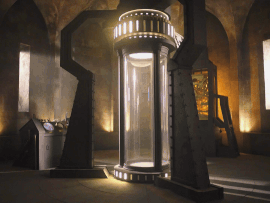
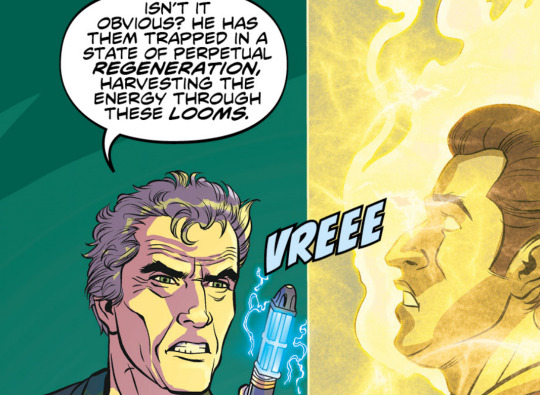
...to the night sky being a 'burnt orange'...
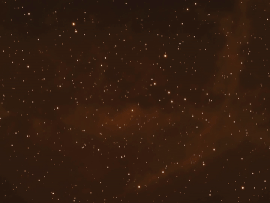
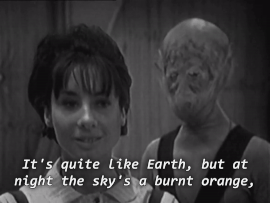
...to the lilies flowers of remembrance for the lost dead...
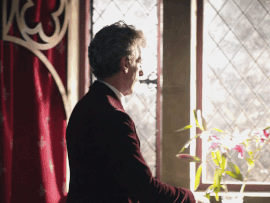
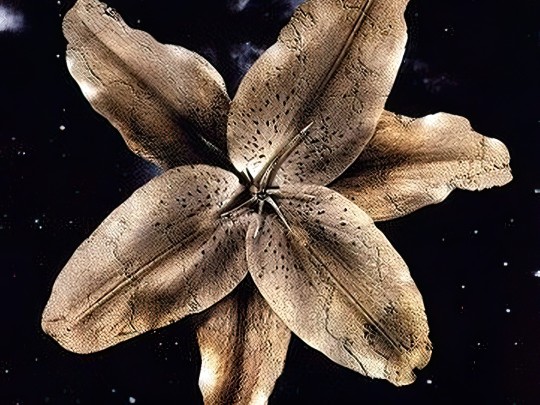
...to sentient buildings...
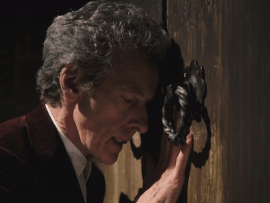
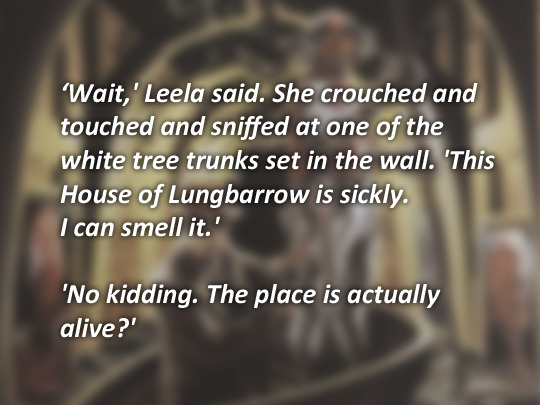
...to that internal soup parallel, both alone in the dial and surrounded by their cousins at the barn...
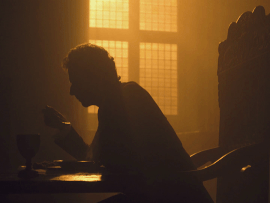
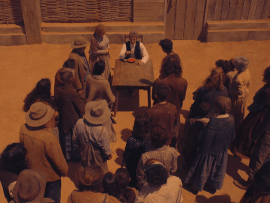
...to the jars of dust.
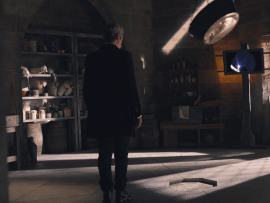
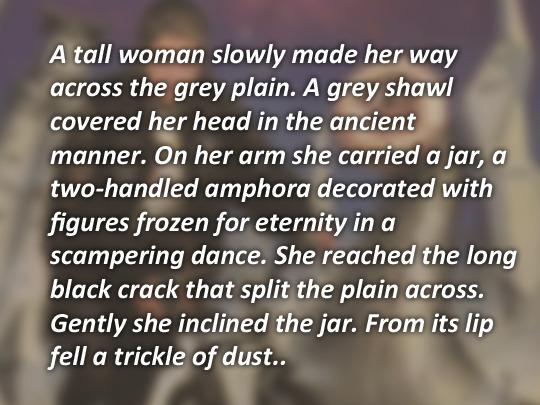
And speaking of that "tall woman" in a "grey shawl", who is also oddly oversized, as if putting the Doctor in the perspective of a child,
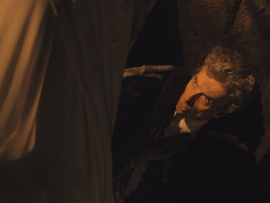
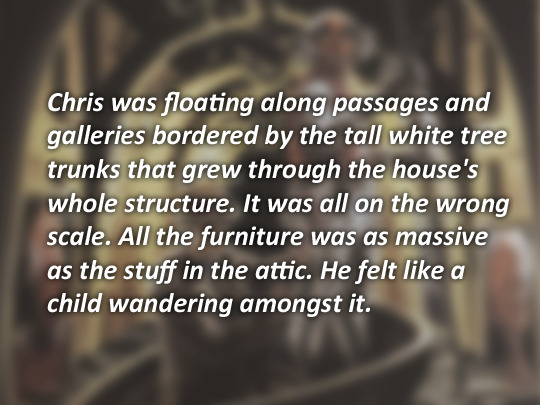
and is explicitly a nightmare from the Doctor's childhood:
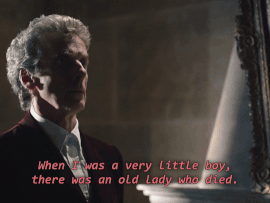
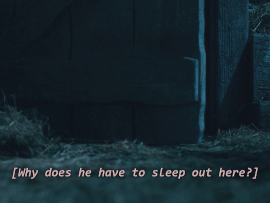
a woman who died, but seemingly passed away far quicker than anyone around her expected (and all the implications relating to that and connecting to the identity of the Hybrid)...
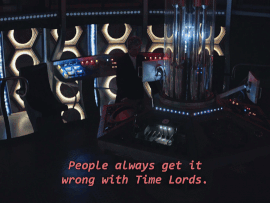
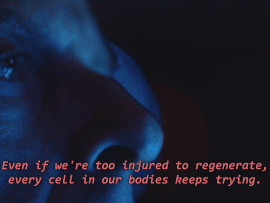
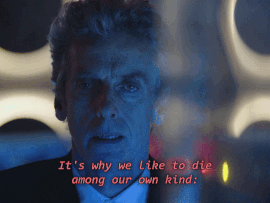
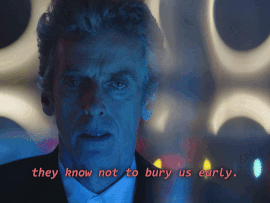
Finally, and this is definitely a stretch, but think back to the room numbers. The Doctor has to find room 12.
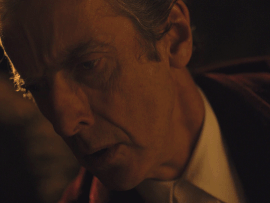
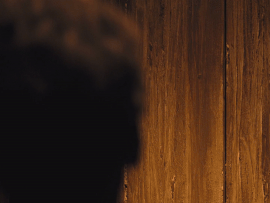
Fittingly. But if 12 corresponds to the Twelfth Doctor, then what about those other rooms...?
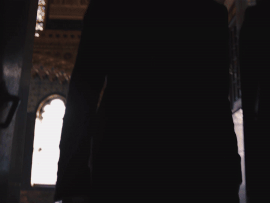
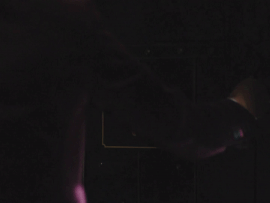
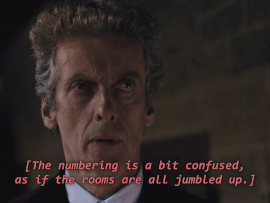
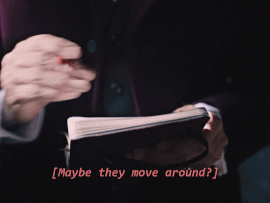
They must also correspond to incarnations, right? It's not like the God Complex - there was only ever one prisoner in the confession dial, after all.
Incarnations, numbering "a bit confused", in a fascimile of the Doctor's childhood home? Huh...
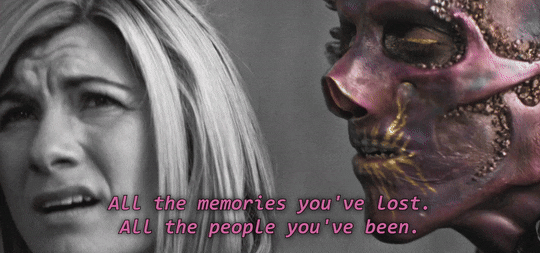

"Illogical house, a construction that makes no sense..."
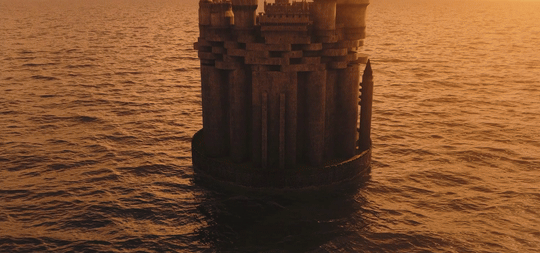
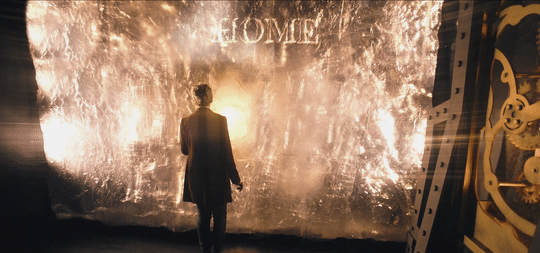
#Doctor Who#Heaven Sent#Cat's Cradle: Time's Crucible#Lungbarrow#Doctor Who: Flux#The Vanquishers#The Sensorites#Twelfth Doctor#Thirteenth Doctor#DW Meta#DW Theory#Long Post
112 notes
·
View notes
Text

YOURE ACE. AND YOU KNOW THE ANSWER.
#this is cats cradle: times crucible btw#GIRL YOU ARE EVERYTHING TO ME <3#shes so trangener. not in the literal sense but in the way that like superhero secret identities are inherently a kind of trans narrative#yknow#dantes new adventures#cat's cradle: time's crucible#time's crucible#ace mcshane
7 notes
·
View notes
Text
VNA #5 Cat's Cradle: Time's crucible (1992, marc platt)

I would have hoped that after the mess that was the timewyrm saga, they would have learned their lesson and stopped trying to tie loose narrative arcs to unrelated stories, but here we are with the cat's cradle trilogy. thankfully, the cat is mostly a motive that bare little to no impact to the story. Time's crucible is a fun book, We get a first peek at Virgin's Gallifrey mythology, Looms are mentioned for the first time, and The Pythia is a very nice addition to preexisting lore, and it's neat that it later made it onto the screen.
The time vortex/ tardis inside bit is a great setting, but the book can feel a little confusing at time, And the process is not as interesting as it could have been, some resolutions don't make much sense.
7/10 overall a pretty solid book
Since i've started reading trough the vna again, here's my opinion about each and every one of them because it's my blog and i do what i want with it
VNA #1 Timewyrm: genesys (1991, John Peel)

Okay, this book is bad, like it's a disaster. The idea of "dr who meets gilgamesh" is pretty good on paper, but damn does this miss the mark at every term.
Every single scene with ace is gross mysoginistic mischaracterisation, Gilgamesh is insufferable, Ishtar is a completely uninteresting antagonist and her motives are cliché af.
At the very least, the stranded Anuans are an interesting twist and the introduction of avram makes for an interesting Change of Pace.
2/10, that was Five hours of my life i'm never getting back
107 notes
·
View notes
Text




rassilon making his whole entire species shorter than it was before bc he himself is short & has a complex abt it will never not be funny.
#(from 'cat's cradle: time's crucible')#(from 'the infinity doctor's)#(from 'executive action')#roo#dw
47 notes
·
View notes
Text
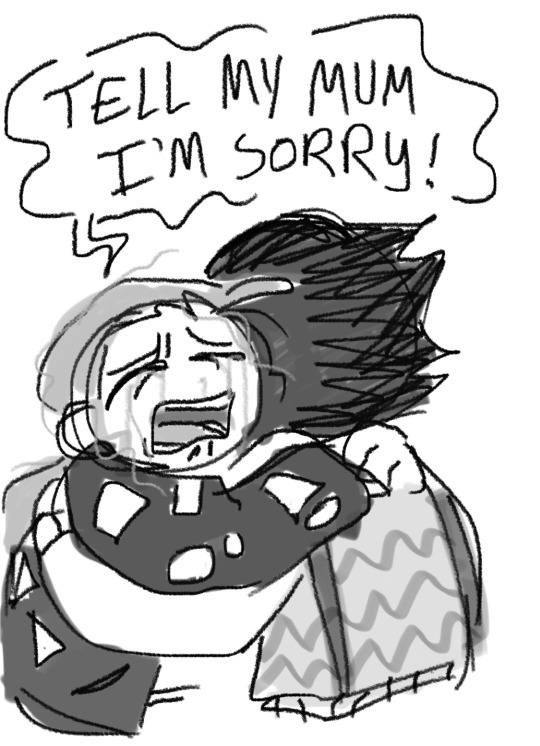

fucked up part about time traveling is sometimes you witness your own horrific death
#doctor who#classic doctor who#seventh doctor#ace doctor who#ace mcshane#scene from cats cradle: times crucible novel#i just really really wanted to draw a sobbing face and then guesstimated everything else#i like the first one better i drew these two days apart#and for some reason keep insisting on using my finger on notepad instead of my entire real life tablet#i’ll prob redraw some things digitally later
41 notes
·
View notes
Text
Using the Doctor Who EU to recontextualize the whole Timeless Child thing
Or, why the Doctor is a dhampir.
Salutations!
Maybe you saw my essay here about how Gallifrey wasn't actually destroyed by the Master using the Expanded universe as my evidence. Now, I want to tackle The Timeless Children's other controversial plot point - the titular Timeless Child's relationship with the Doctor. Also, perhaps you have heard of the Doctor Who book Lungbarrow, and how it connected the Doctor to a mysterious figure called the Other in Gallifrey's ancient history. So how are those connected? Was the Doctor really the Other? And just what is the story of the Timeless Child?
So let's talk about the Timeless Child. Let's talk about the Other. Let's talk about Patience. Let's talk about Division. And let's talk about vampires and where regeneration really comes from.
Shall we get started? Buckle up for another ride into the endless pit that is the Doctor Who expanded universe.
Okay, ground rules first. Anything seen on tv, happened. I can recontextualize as much as I want (and I'm gonna do that, believe me) but it still has to fit with everything we see onscreen. I also have to use all of an EU source if I use it. No picking and choosing bits. However, that same loophole applies to EU material - I can recontextualize those as much as I want, too.
With that out of the way, let's meet the stories that are our players. I'm going to be sorting them into medium by category this time.
Tv stories:
Ascension of the Cybermen / The Timeless Children: The controversial Thirteenth Doctor episodes. I'm assuming you're familiar with if you're reading this.
Fugitive of the Judoon: The Thirteenth Doctor story that introduced the Fugitive Doctor. I'm assuming you're familiar with this.
Flux: The Thirteenth Doctor story that followed up to the Timeless Child plot points in a way that is very relevant to this discussion. I'm assuming you're familiar with this.
A Good Man Goes to War: An Eleventh Doctor episode that established some of the history of the Time Lords
The Brain of Morbius: A Fourth Doctor story. Notable for this discussion because it featured brief images of ten faces that were implied to be incarnations of the Doctor from before the First Doctor. These are collectively known as the "Morbius Doctors".
State of Decay: The Fourth Doctor tv story that established the series lore on vampires
Books:
Cat's Cradle: Time's Crucible: the Seventh Doctor book that laid the groundwork for Lungbarrow and its Gallifrey Lore
The Pit: A 90s Who book with some vampire lore
Goth Opera: A 90s Who book with some vampire lore
Damaged Goods: A 90s Who book with some vampire lore
Cold Fusion: A book starring the Fifth and Seventh Doctors that is notable for introducing the character of Patience
Lungbarrow: the big Gallifrey Lore book. I will be going over this one in depth
Interference: Shock Tactic: A 90s Who book with some vampire lore
The Infinity Doctors: A very confusing Doctor Who book (this will get explained later)
The Book of the War: The first book in the Faction Paradox series
Audios:
Zagreus: A Big Finish story starring the Eighth Doctor and Rassilon
Patience: A Big Finish story starring the Eighth Doctor
Comics:
The Tides of Time: A 70s comic starring the Fifth Doctor
The Bidding War: A 2010s comic with some vampire lore
Monstrous Beauty: A 2020s comic with some vampire lore
Origins: A recent comic that features the Fugitive Doctor
Okay, so there are kinda four threads running together that tell a more complete story, but were all written independently of each other. The story of the Timeless Child and Division, the story of the Other, the story of Patience, and the story of the Yssgaroth War. Let's go through them in order.
Also while the Other, the Timeless Child, Patience's husband, the Fugitive Doctor, the Infinity Doctor, the Morbius Doctors, and the Doctor are all presented as more or less the same character who all call themselves "the Doctor", I will be referring to them all separately. I have a few reasons for doing this which will become clear later, but it's also helpful for reasons of clarity.
Prologue: Where all this mess came from
So in the 70s, there was a tv story called The Brain of Morbius. Morbius was a Time Lord president who decided it was Morbin Time, tried to conquer the universe, and caused a civil war on Gallifrey in just about the only interesting thing to happen on Gallifrey between Rassilon's presidency and the Doctor being loomed. He was killed, but one of his followers managed to save his brain and is trying to make Morbius a new body so it can be Morbin Time again. The Time Lords decide to throw the Doctor at this problem, and he ends up getting into a mind-bending contest with Morbius (who was by that point in an artificial body). During this, both Morbius and the Doctor's past incarnations are shown on a screen, and then we see ten new faces while Morbius says, "How far, Doctor? How long have you lived?". A lot of people assumed those faces were Morbius's, but the intention from the producers was that they were prior faces of the Doctors (I will be referring to these incarnations as the Morbius Doctors moving forward, as that is how they are generally reffered to in the fandom). Trouble is, the rest of classic who completely ignored that.
Oh and if you're worried, while Morbius won the mindbending contest, it left him disoriented enough that he was able to get mobbed by the Sisterhood of Karn and pitched off a cliff, averting the renewal of Morbin Time.
And with that out of the way, let's get on to the real attractions.
Part 1: The Timeless Child and Division
So this story is the most straightforward of the three. In Ascension of the Cybermen / The Timeless Children, it is revealed that in Gallifrey's prehistory, a Gallifreyan scientist named Tecteun travelled off-world (in her world's first exploration of another planet) and found the Timeless Child by a portal to another universe. She took the Timeless Child back to Gallifrey and discovered that the Timeless Child had the ability to regenerate. Tecteun was able to synthesize this regenerative power and give it to her own people, becoming one of the founders of modern Time Lord society in the process. Later on, the Timeless Child and Tecteun were both recruited into something called Division, a time-active-interventionist group that skirted around or outright ignored Gallifrey's laws. It is also stated that the Timeless Child's memory was wiped - at least once, possibly more than once - in order to control them. It's also suggested that Tecteun seems to have regrets about all of this, given how she left a message for the Timeless Child in the matrix about it.
This is where the story gets fuzzy. The next time we see anything, the Timeless Child has evolved into the Fugitive Doctor. She is seen working for Division in the flashbacks in Flux and Origins, but following Origins, she goes on the run from them. The events of the Fugitive Doctor's flight from Division play out in Fugitive of the Judoon. She is able to assassinate Gat, the Time Lord seeking her capture, and while it comes at significant personal loss, there is nothing to indicate that the Fugitive Doctor is unable to make a clean getaway.
By the story presented in Ascension of the Cybermen / The Timeless Children, however, the Fugitive Doctor is assumed to have been captured with her memory wiped to eventually become the Doctor. Let's put a pin in that assumption, though. That same story also shows the Fugitive Doctor and the Morbius Doctors being a part of the Doctor's past.
Tecteun, meanwhile, had become head of Division (if she wasn't head of it to begin with). Origins briefly shows her leading Division at the time of the Fugitive Doctor, and she is finally shown meeting the Doctor proper in Flux. There, it is revealed that she had started considering the entire universe a scientific experiment, but due to the Doctor being considered too much of a rouge element, she decided to use antimatter called flux from outside the universe to destroy the universe, with Division being safe outside the Universe. She also released a pair of Great Old Ones, Swarm and Azure, with the intention that they would kill the Doctor. Tecteun's plan was that the old universe would be destroyed, and that Division would conquer the universe that the Timeless Child originated from.
This plan did not work.
Swarm and Azure instead killed Tecteun and destroyed Division, before being destroyed by an entity only known as Time (and I could go on a whole tangent on what her deal is, but I'm gonna save that for another post). It's not shown explicitly in the show, but I also believe Time removed the destruction of the flux from the universe as well (mostly because planets explicitly destroyed in Flux are shown still existing in the future of the series).
In any case, during the Flux event, the Doctor was able to recover the archive where the Timeless Child's wiped memories were stored, but she ultimately decided not to access them.
It's never stated which universe the Timeless Child comes from in the show, but we're gonna circle back to that. It's also not stated how long Tecteun ran Division between its founding in early Gallifreyan history and its destruction during the Flux event. We're coming back to this, too.
Part 2: The Other
Cat's Cradle: Time's Crucible establishes two very important things about Gallifreyan history. One, all Time Lords became sterile early in their history - shortly after the conclusion of their war with the vampires (more on that war in a bit). Since then, instead of having sex, they have big cloning machines called Looms that make new Time Lords. And two, Rassilon (the founder of Time Lord society) had two major co-founders - Omega, and one other whose name was lost to time. He gets called just "the Other."
Rassilon and Omega were both established as characters in the classic series, but the Other is an invention of the books in the 90s (from the reader's perspective at least - he was a behind the scenes idea from the last few seasons of classic who, but he was never explicitly mentioned onscreen). He gets cryptic references all over the Virgin New Adventures book line, but this only gets concrete in their final Seventh Doctor book, Lungbarrow.
Where we get to know them in the book, Omega is presumed dead, and the Other and Rassilon are having a falling out. Omega's death is weighing heavily on the Other, and he thinks Rassilon is going power-mad and is trying to have the Other killed. Omega's last and most impressive creation, the stellar manipulator called the Hand of Omega, is quite possibly the Other's only friend by this point. The Other wants to leave the planet and so he tells his family to escape, and then confronts Rassilon with his intentions. Rassilon Does Not Like This and tries to have the Other stopped, and blocks all spaceports to make this happen. The Other then calmly walks into the primary generator for the looms and is never seen again.
And then, ten million years later, out from a loom, comes the Doctor. The Doctor's looming process was unusual, with the Doctor later claiming he could remember just before it happened, waiting to be born. (Although given the Doctor was five years old at the time he said this, that may be a little suspect). In any case, the Doctor lives a fairly normal life for a while, until he is found by the Hand of Omega which sees in him its old master. Shortly thereafter, the Doctor is confronted by the Time Lord Glospin (explaining his deal is a little complicated but he's a part of the same Family House as the Doctor is, the titular House Lungbarrow), about some irregularities in the Doctor's biology before being driven off by the Hand. It's ambiguous if either of these were the deciding factor, but the Doctor takes the Hand and leaves Gallifrey shortly thereafter.
Of course there's one last little piece left to take care of. If you're familiar with Classic Who, you may know that when we first met the Doctor, he was travelling with his granddaughter, Susan.
Lungbarrow claims that the Doctor's first trip in the Tardis was to travel back to Gallifrey's prehistory and meet the Other's granddaughter, the last child born before the Time Lords became sterile. She recognizes the Other in the Doctor, and considers him her grandfather. The Doctor doesn't quite recognize her, but takes her on as his first companion in the Tardis. And thus, Susan joined the Tardis crew.
The other thing that's important is uh that Lungbarrow has an actual plot. And said plot is only tangentially related to the above. Everything I just said is presented as three flashbacks in Lungbarrow - one straight narrative sequence (the argument between Rassilon and the Other), one where the Doctor shares his memories of leaving Gallifrey (basically everything that happens with Glospin, the Hand of Omega, and the Doctor first leaving Gallifrey), and one where several characters enter the Doctor's subconscious and have a dream sequence (including the Other walking into the Looms and the Doctor meeting Susan). The subconscious trip has some moments to it that are super trippy and metaphorical, and I'm gonna use that fact later. But for now, on to part 3!
Part 3: Patience
Like I said earlier, Cat's Cradle: Time's Crucible is the story that establishes that all Time Lords are sterile. At the end of a civil war in Gallifrey's ancient history, the leader of the losing side, Pythia, cursed the people who would become Time Lords with sterility before killing herself. (Her followers, by the way, left Gallifrey and eventually became the Sisterhood of Karn). The Time Lords, desiring to avoid extinction, created breeding engines known as Looms, which would create new Time Lords through what was effetely cloning. That's the story presented in Cat's Crade: Time's Crucible, anyway. But if you look at other places in the EU, this story starts to crack. An Earthly Child introduces Susan Forman's explicitly biological son, for example. And in Lungbarrow, the Time Lord Andred is able to get a human, Leela, pregnant, although the character's future appearances in Big Finish are notably child-less, suggesting the pregnancy failed somehow (either that or the child removed themselves from history as part of joining faction paradox and became the character known as Intrepid, but this is a tangent).
So are Time Lords sterile? Yeah, I think so. For the most part. But we know that not all of them are. A rare few can still reproduce sexually. There is another Time Lord who had a biological child that I've yet to bring up, as well. Her true name was lost to time, so we know her only as Patience.
This is her story.
The character of Patience has some truly strange origins, even for the Doctor Who EU. In the 1982 comic The Tides of Time, the fifth Doctor briefly sees an illusion of someone who looks familiar to him, created by the demon Melanicus using something called the Event Sythesizer (no, I'm not going to explain that). The art shown is close enough to Second Doctor companion Zoe Herriot to assume that's who the author and artist intended the illusion to be of, but that's not the direction later stories went in.
The character of Patience was introduced proper in 1996's book Cold Fusion. It also features the Fifth Doctor, in an earlier point in his life then The Tides of Time. In it, a prototype Tardis crashes into a planet that is later colonized by humans. The humans discover one pilot, comatose, who by all rights should be dead. She isn't. They take her back to their big fancy lab and attempt to find out more about her with basically no success.
Enter the Doctor. (And also Tegan Jovanka.)
When the Fifth Doctor stumbles into this, he is able to help the pilot complete her first regeneration. She is unable to remember much of anything from prior to her regeneration and is from Gallifrey's distant past. She is, biologically, something of a proto-Time Lord: she speaks a different language then the Doctor naturally, she only has one heart, and a few other things. She's explicitly more-or-less a contemporary of Rassilon.
Not having a name for herself, she adopts the moniker "Patience" on Tegan's unintentional suggestion. Despite all this, Patience and the Doctor recognize each other on some level, and neither really have any ideas as to why - the Doctor shouldn't even be able to recognize the dialect of Gallifreyan she speaks, as it is dead by his time. Patience has some garbled memory of fleeing from arrest as ordered by Rassilon (with the implication being that any fertile Time Lords were having their births stopped so that the loom-born were to inherit Gallifrey). Patience's escape came with the help of her husband, whom authorial intent confirms as one of the Morbius Doctors. In any case, in the present day, Patience is starting to properly recover when she is shot in the back of the head, apparently killing her. Her body then disappears. The Fifth Doctor's memory of Patience is lost shortly thereafter when the Seventh Doctor orchestrates the Fifth Doctor losing his memory of the whole adventure in order to preserve the timelines. The Seventh Doctor only met his prior self after Patience's body had vanished, meaning that the Doctor's entire memory of Patience was erased - except, perhaps, for some vague recollection which we see in The Tides of Time.
While Patience's fate is followed up in the book The Infinity Doctors, The Infinity Doctors is a very strange book that doesn't really contribute much to this ongoing discussion. The Infinity Doctors is deliberately evasive about which Doctor it stars, with its protagonist being sometimes implied to be the First Doctor and sometimes the Eighth. It's very possible that Patience and Omega (yes he's here but I'm not going to explain that) are the only characters in the story from the Whoniverse as we understand it, with everyone else being from a different universe. I might do a breakdown of The Infinity Doctors someday, but now is not that day.
The only other information we have about Patience comes from the 2021 audio story fittingly entitled "Patience". In it, the Doctor tells uses an ancient artifact that takes the form of a deck of cards called the Paradoxica to analyze time and hide his companions - Liv Chenka, Helen Sinclair, Tania Bell, and Andy Davidson (yes, the Torchwood character. no, I'm not explaining that either) - from the Judoon. The narrative is interspersed with the Doctor telling a fairy tale about a woman completing an impossible task (emptying an ocean with a bag that had a hole in it) and receiving the child she desired once she had spent an eternity completing this task. The story ends with the confirmation that this woman was Patience, and that she gave the Doctor the Paradoxica. How this happened is left unsaid - either she gave it to her husband who became the Doctor, or this happened during the events of Cold Fusion.
Part 4: The Yssgaroth War
Unlike the other narratives I've just rambled off, the Yssgaroth War is much more of a patchwork from various places around the EU, so this is gonna be even more scattered than I have been thusfar.
State of Decay, for being a story set in the pocket universe called E-Space, ended up being one of those foundational Gallifrey lore episodes of the classic series. That's the serial that established that at the dawn of time, the Time Lords fought and won a massive war against the vampires.
Yes, you read that right. This is one of my favorite pieces of Doctor Who lore.
State of Decay establishes that the Great Vampires were massive bat-like creatures who could drain the life from entire planets and who created more traditional vampires as their servants. Rassilon lead Gallifrey against them, and ordered the construction of "bowships," which were giant spaceship crossbows that could be used to stake the Great Vampires. The Great Vampires were ultimately defeated by the Time Lords. EU sources generally agree that this was the biggest war the Time Lords ever participated in until the Time War ten million years later.
The book The Pit would add a couple of new details about the conflict. It would rename the Great Vampires "Yssgaroth" and claim that the Yssgaroth originated from outside the universe - the early time travel experiments overseen by Rassilon ripped a hole in reality and the Yssgaroth were what came through with intent to consume the universe. These details are supported by Cat's Cradle: Time's Crucible and Interference: Shock Tactic.
A couple more recent comics have fleshed out the Yssgaroth War a bit. The Bidding War further reinforces that the Yssgaroth are from outside our universe, with it showing that during the Time War, the Time Lords opened a rift to the Yssgaroth dimension in an attempt to use them as a weapon against the Daleks. Monstrous Beauty was the first story to show us the War proper, depicting Rassilon personally leading forces against the vampiric army.
And this would all be interesting but irrelevant to our discussion if not for two stories published in the early 2000s that both seek to recontextualize the Yssgaroth War and the Time Lord's rise to power.
Let's start with Zagreus. The story as a whole is dedicated to deconstructing Rassilon's façade as a benevolent and reasonable ruler and instead reveals him to be a xenophobic tyrant who wished to remake the universe in his image - something that lines up with pretty much all of Rassilon's appearances post-Zagreus. As part of this, the vampire Lord Tepesh states that before the war, the vampires were peaceful and Rassilon provoked them because he feared their power. Tepesh is presented by the narrative as an unreliable narrator, but the point he makes is still worth noting.
The other story I need to talk about is The Book of the War. While the book's primary focus is The War in Heaven (for the uninitiated, that's basically spin-off series Faction Paradox's version of the Time War), it does give a lot of relevant information about the Yssgaroth War. First of all, it gives the timing of the War being right after Gallifrey established History as a concept - by "anchoring the thread" and making a linear history, the Time Lords accidentally let the Yssgaroth into the universe. While this contradicts some of the timings given by some of the sources mentioned above (other sources agree that it was the early experiments that caused the Yssgaroth to enter the universe not the final establishing of History and mastery over time), this can be excused since The Book of the War is an in-universe document and so may not be completely accurate. What makes this book relevant is that it also theorizes that the Time Lord's regenerative capabilities were stolen from the vampires. Even for an unreliably narrated book, this is treated as speculation, but as a concept, that is fascinating.
Interlude: when regeneration happened
There is some inconsistency in all of these sources as when regeneration first became a property of the Time Lords. The Timeless Children has it come shortly after they discover interstellar space travel, and far before time travel, but several of the VNA-era books (including Cold Fusion and I think Cat's Cradle: Time's Crucible) depict early time-travelling Gallifreyans as being without regeneration. The tv episode A Good Man Goes to War states that regeneration came about as a result of exposure to the Time Vortex. My personal take is that The Timeless Children showed Tecteun discovering regeneration, and initially only shared it amongst herself and her elite (Rassilon, etc.). After the Looms went into effect, they started Looming more and more Time Lords with regenerative capabilities, until eventually it's a shared trait among all Time Lords. After ten million years, the artificial origins of regeneration have been lost to time, but the symbiotic nature of the Time Lords to Tardises and the Time Vortex has meant that a being conceived in a Tardis could be engineered to have limited regenerative capabilities.
Part 5: Bringing it all together
So back to the Doctor and Gallifreyan history. Uh, how does this all make one cohesive story?
Okay so our story starts with Tecteun and finding the Timeless Child by a portal to another universe. She takes said child home, discovers from it the secrets of regeneration, and so on and so forth. Tecteun, Rassilon, and Omega become the three founders of Time Lord society.
So that's the first thing there. The Other, as revered in Time Lord history, isn't the Doctor or some version thereof. The founder whose name was lost to time was Tecteun. And Tecteun discovered regeneration from the Timeless Child. This child, for whatever reason, starts calling themselves the Doctor.
But wait? Wasn't there some theories running around that the the Time Lords stole regeneration from vampires? And that vampires initially weren't as hostile to the universe before Rassilon saw them as competition?
Yes, yes, there were. It's simple, really. The Timeless Child was from Spiral Yssgaroth. They're a vampire.
(I really wish I had been clever enough to come up with that on my own, but I'm not. Pretty much everything else here is out of my own brain, but that is a fan theory I saw on the internet.)
In any case, the Yssgaroth War was motivated, at least in part, by the Vampires' outrage that their secrets and child had been stolen. But, as history records, they were defeated.
And for a time afterwards, Tecteun and Rassilon continue to rule Gallifrey together. But Omega's apparent death shortly after the end of the Yssgaroth War weighs heavily on them both - and they're both ambitious enough to not quite appreciate the other being their equal. Trouble is, they kinda need each other. Rassilon, despite his posing, isn't a scientist - he's a politician. He needs his scientists to continue to work miracles, and Omega is already gone, so that just leaves Tecteun. Tecteun, for her part, is no leader. She wants power but doesn't have the people skills. And she still cares deeply about her people and about the vampire she has come to see as her child. The two drift apart - Tecteun becoming the leader of Division which she took increasingly off-world while Rassilon becomes more and more the sole face of leadership on Gallifrey.
Eventually this reaches a boiling point. Tecteun and Rassilon have lost all trust in each other. Tecteun makes preparations - including leaving the message in the Matrix we saw in Ascension of the Cybermen / the Timeless Children. She and Rassilon then have the confrontation that we saw in Lungbarrow. But Tecteun doesn't throw herself into the looms - she takes herself off Gallifrey through technology Rassilon doesn't know about and begins to cut Division's ties with Gallifrey altogether. Division has already begun recruiting across the universe, so she figures she can leave Rassilon to his one planet. Notably, she also leaves the Hand of Omega behind on Gallifrey, where it is eventually put in a vault and forgotten about. She maintains contact with Gallifrey only through her agents, one of which is the Timeless Child.
For their part, the Timeless Child has gone through several incarnations. They've had their mind wiped to hide that they're not Gallifreyan, and they have then been the Morbius Doctors, including Patience's husband. The Timeless Child has had a personal life (as seen by their marriage to Patience), but they're increasingly being a full-time agent of Division.
In any case, right now the Timeless Child is the Fugitive Doctor. And she plays along with Tecteun for a while. However, following the events we see in Origins, she goes on the run. Tecteun has Division track her to Earth, where the events of Fugitive of the Judoon play out. The Fugitive Doctor manages to get away as we see, but she doesn't know of any way to get away from Division long-term (as Big Finish is currently exploring) - and, away from Tecteun's influence and protection, she's starting to work out that she's not the Gallifreyan she thinks she is.
In an act of desperation, she pilots her Tardis back to Gallifrey - on the very same day Tecteun left. She takes Tecteun's place in Lungbarrow's story, and throws herself into the Looms, where she dies, dissolving into the giant vat of Gallifreyan genetic material.
This leaves Tecteun searching time and space desperately for the Timeless Child. At first, the Timeless Child seems nowhere to be found. But eventually Tecteun discovers that there is a time traveler called the Doctor out and around the universe. An investigation into the Doctor reveals that they've been all over the universe. Trying to just grab them and do a memory wipe isn't an option because they've done too much. Tecteun doesn't realize this Doctor is a different person to the Timeless Child, to the Doctor they left a message in the Matrix for.
Tecteun had probably never been that good of a person, but she used to care. She used to care about Omega, but he's gone. She used to care about Rassilon, but they burned too many bridges. She used to care about her vampiric child, but she takes this as a betrayal. And whatever good left in Tecteun dies.
Tecteun decides to destroy the universe and start over in a new one where she can control everything, so she picks a point far in the future where Gallifrey will have been destroyed naturally so her home planet will be unaffected. By convivence, one of the Doctor's most common destinations - Earth - happens to be at that point. Tecteun initiates the Flux event in Earth's time and releases Swarm and Azure to finish the Doctor off.
The Doctor stumbles into this, but she's operating off incomplete information from the Matrix. She doesn't realize that she's not the Timeless Child, since the Master seemingly destroyed any records that she could check his claims against. So when Tecteun and the Doctor confront each other, they both assume that the Doctor is the Timeless Child.
And this becomes a moot point because the Doctor finding Tecteun and Division HQ allows Swarm and Azure to find it as well. They kill Tecteun and destroy Division. If you're reading this, you probably watched Flux, you know how this goes.
It's not clear if Rassilon is aware that Tecteun died shortly after their argument. He certainly comes to the conclusion that she won't be an ongoing concern anymore, and, as the last survivor of Gallifrey's founding trio, uses his remaining lives to rule Gallifrey unopposed. With no one to oppose him, he removes Tecteun's name from record - as far as he's concerned, she betrayed him and does not deserve to be remembered.
Ten million years pass.
The House of Lungbarrow looms a new Time Lord, but, for whatever reason, this particular Time Lord has a significant amount of the Timeless Child's genetic material mixed into their genetic soup. This new Time Lord chooses to call themselves the Doctor - in unconscious echo of their genetic predecessor. Their amount of vampiric genetics makes them genetically distinguishable from other Gallifreyans if close examination is done, but for a while no one has any reason to do this.
This is also why I get to call the Doctor a dhampir - they're not a true vampire, but have a nontrivial amount of vampiric genetics - or, to use the terms of The Book of the War, they carry the Yssgaroth Taint.
These genetics are still enough to get the attention of the Hand of Omega, which has been mothballed for those Ten Million years. Maybe the Hand sees the Timeless Child in the Doctor, or maybe it's just intrigued by someone who isn't just another Time Lord. In any case, Glospin confronts the Doctor, the Hand drives Glospin off, and the Doctor leaves Gallifrey with it.
He also leaves with Susan. She isn't from the dawn of Gallifrey. Instead, she is a Loomed Time Lord of the Doctor's era who found herself ostracized and disliked. That being said, she found community with three other Time Lords: the Doctor, the Master, and another Time Lord named Braxiatel. The four of them are all outsiders from their own Houses, and so consider themselves a house unto themselves, and Susan, as the youngest, began referring to the Doctor as "Grandfather", as that term is reserved for the head of a House (something that is established in The Book of the War), as she views him as the head of their little house of four.
In any case, the Doctor and Susan leave Gallifrey. The Master loses his mind when he realize he got left behind, steals a Tardis himself and heads out after the family he thinks abandoned him. Braxiatel stays behind and becomes a successful politician and art collector.
A couple hundred more years pass.
We're now in the events of Lungbarrow. The Doctor shares his memory of leaving Gallifrey with some of the fellow members of his House. However, he edits Susan out of the memories he shows - technically, he went through the criminal justice system for this, but Susan never did and he doesn't want her to. Gallifrey has seemingly forgotten about her, and he wants to keep it that way.
And then he has his vision trip dream sequence where he sees the past and sees the Timeless Child walk into the Looms. He then sees a memory of himself meeting Susan. This isn't literal - it's symbolic of Susan and the Doctor's relationship changing and evolving as they left Gallifrey. The Doctor knows this isn't literal, but it's in his best interests to act like it is - he's not in control of this dream sequence and several other people are there (including one of the Doctor's enemies), and he still wants to protect Susan, so he goes along with that story.
The Doctor continues their life and eventually gets to the Thirteenth Doctor where she meets the Fugitive Doctor in Fugitive of the Judoon. When she scans herself and the Fugitive Doctor, the two register as the same entity. However, Time Lords are not biologically identical across regenerations - the Doctor has to have something specific to herself that she is looking for.
And she actually has one. At some point in the Doctor's life, they found a genetic quirk that has persisted across their regenerations. They don't know it, but it's the Yssgaroth Taint. Since the Doctor has never encountered another Time Lord with the Taint, she is by this point assuming it's a quirk of her own biology, so takes her sonic detecting the Taint in the Fugitive Doctor as confirmation that the two are the same.
And then shortly after the Doctor meets her genetic predecessor, the aforementioned stuff with Tecteun happens. It's possible that the Doctor themselves has noted the ambiguities in their backstory and heritage but given that there were several thousand years of life between the Seventh and Thirteenth Doctors, it seems likely that they don't think to try to analyze it that closely.
And that's a wrap! If you have any thoughts on all of this, I'd love it if you would share them! Thank you!
#doctor who#doctor who eu#doctor who expanded universe#dweu#dw eu#gallifrey#tecteun#rassilon#the timeless child#the timeless children#faction paradox#yssgaroth#lungbarrow#doctor who virgin new adventures#doctor who vnas#dw patience#doctor who virgin missing adventures#doctor who vmas#cold fusion#the book of the war#zagreus#heartshaven wrote an essay#heartshaven's headcanons
89 notes
·
View notes
Text
#doctor who#(if it's not clear#i'm aiming for stories that could genuinely work as introductions#they'd just give you a really skewed idea of what the rest of the franchise is)
33 notes
·
View notes
Note
Hi!! I really really want to get into the academy era eu stuff, but I just have no idea where to start 😭😭😭 do you have any audio/novel/etc recs to start off with? Thank you so much!!
-✨️🪐 anon
Hello! So sorry I didn't see this sooner - I've been quite busy lately (busy enough I forgot to submit my Big Finish Short Trips this year...)
Anyway, for the Academy Era, the starting off point is generally Divided Loyalties. In this novel, there is a long dream sequence of the Academy Era. Since it is a dream, it might not be 100% accurate, but it's what we have.
Otherwise, most of the information we have on the Academy Era comes from the occasional reference in a bunch of different stories. Some of them have more Academy Era material than others...
We can get some pretty good insights from some DWEU material (beyond what is in the TV show). I won't list spoilers here just in case that wasn't what you were looking for (though I have other posts that do entail this information), but here's the list I can think of off the top of my head. Some of these are stories with just general young-Time-Tot era references (not necessarily at the Academy but still the itty bitty, pre-leaving Gallifrey guys), but I'll include them anyway. And some of these references are quick, so be prepared.
Novel: Divided Loyalties
Novel: Tomb of Valdemar
Novel: Deadly Reunion
Novel: Lungbarrow
Novel: The Death of Art
Novel: The Dark Path
Audio: Time in Office
Audio: Darkness and Light
Novel: The Time Lord Letters
Short story: The Nameless City
Audio: Planet of the Rani
Audio: Master
Comic: The Glorious Dead
Comic: Weapons of Past Destruction
Comic: Space in Dimension Relative in Time)
Short story: The Three Paths
Audio/Novel: Mission to Magnus
Novel: The Eight Doctors
Audio/Novel: Cold Fusion
Audio: The Eleven
Audio: Blood of the Time Lords
Audio: The Widow's Assassin
Audio: Crossed Lines
Short story: Celestial Intervention - A Gallifreyan Noir
Short story: The Legacy of Gallifrey
Novel: Timewyrm: Exodus
Novel: Goth Opera
Audio: The Toy
Short story: Birth of a Renegade
Short story: Rebel Rebel
Audio: Neverland
Audio: The Next Life
Novel: Island of Death
Novel: Unnatural History
Novel: Christmas on a Rational Planet
Audio: Disassembled
Comic: Flashback
Audio: Together in Eclectic Dreams
Audio: The Last Line
Short story: Report on Term's Work
Audio: The Wormery
Audio: Storm Warning
Novel: Cat's Cradle: Time's Crucible
Novel: The Infinity Doctors
Short story: Seven Deadly Sins
Audio: Order of the Daleks
Audio: The Apocalypse Element
Audio: Prisoners of Fate
Novel: Original Sin
Novel: The Twin Dilemma
Anyways, these are the ones that immediately pop to mind when I think of stories that have references. It's not a complete list, mind, just the ones in my head at the time of writing. They are also not in any order, just the order I thought of them.
Regardless, most of these are just references, and you may not want to read an entire novel for a single reference...If that is the case, let me know, and I can explain some more!
#doctor who#dw#dr who#new who#classic who#big finish#big finish doctor who#big finish audios#dw eu#doctor who expanded universe#doctor who eu#academy era#doctor who academy era#ask#asks#so sorry i didnt see this!!!!!!!#didnt include the content of the references in case you wanted no spoilers but lmk if you dont want to read whole books for 1 reference lol#the deca#theta sigma#koschei#the master#the doctor
123 notes
·
View notes
Text
Update on the VNA collection: I have 30/61. I ran out of room in the doctor who shelf a while ago so idk where the fuck 31 more books are going to go
got possessed by the spending money demon and now I've convinced myself putting together a complete VNA collection is a good idea
#I think I have all the hard to find ones now#unless the cat’s cradle trilogy is considered rare?#i got Time’s Crucible like a year ago and it was like $15 so I doubt it#aaaaaand I just pulled the trigger on the other 31#dweu#doctor who#virgin new adventures
9 notes
·
View notes
Note
Omega's deformed, skeletal appearance in The Reality War kinda gave off yssgaroth vibes. Considering also the whole bone aesthetic going on in that place and those people permanently connected into some digital consciousness, feels like there should be potential for war in heaven/faction paradox/remote canonwelding in there?
Anon, no kidding, I was literally just watching reaction videos for that episode and had exactly the same idea when I thought about his huge size and the fangs he seemed to have. I literally thought that he looked like a Great Vampire or something.
[Warning - A lot of fanon-weldy BS below:]
I feel you could even make a compelling theory that the "Underverse" is actually the Spiral Yssgaroth, and that by ripping open the Web of Time, the Rani was actually creating more tears into that universe.

It's worth nothing there's a historical connection there, given that Omega originally fell into a black hole experiment, while the Vampires were released from one. Not to mention, the Doctor actually ends up banishing Yssgaroth?Omega with the power of billions of supernovae, presumably powered by the Eye of Harmony.
Combine this theory with the retcon regarding Omega's banishment, and it starts to feel a bit like Rassilon somehow retroactively transferred all these legends, myths, and truths about himself to Omega instead, doesn't it? Being a despot, banished by his kin, a secret vampire...? We even see a Seal of Rassilon be symbolically transformed into a Seal of Omega in the episode!
(Plus this happens in an episode where we get a weird twist on Time Lord sterility, something which was originally a consequence of the Intuitive Revelation, led by Rassilon, though including Omega and others. And this isn't even mentioning the obvious Magic vs Science themes of this whole era, and how that relates to the revolution and Rassilon's changing of the laws of physics following Omega's loss.)
Maybe as part of his actions as the Great Grey Eminence and/or during the Time War, Rassilon did something to rewrite his own history and scapegoat Omega for all his own sins? Note that the Eminence's changes also ended up erasing/delaying Romana's presidency and cancelling out the events of Lungbarrow, which of course connects to the big sterility question. On the Romana point, potentially we could even connect it to Omega's return in Intervention Earth, which was referenced in the previous episode, despite having been erased from the timeline along with Trey's presidency (plus you could add the theory that Trey IS Romana III of the EDAs, and that erased timeline is connected to / part of the War in Heaven)?
Heck, you could almost even connect it with the stuff with Rassilon in the Time Lord Victorious storyline, where we seemingly meet a female incarnation of Rassilon during the Eternal War, implied to have been part of some great secret of his. This could just be the gender thing and how that interacted with the Pythian / Post-Revelation gender role switch, but it becomes even more interesting when you consider that stories like Cat's Cradle: Time's Crucible are pretty dependent on Rassilon being a (almost certainly cis-)male, and the comic's events seemingly predated the "official" introduction of regeneration, and combine that with the origins of regeneration either being taken from the Timeless Child or based on Vampire abilities.

Then combine THAT with @aristidetwain's "Child-That-Was-Taken" idea, that the Timeless Child's universe WAS the Spiral Yssgaroth, and the similar purple hues of the reality fissures and the portal the Timeless Child was found under, and it all starts coming together, doesn't it?


Anyway, I'm really getting away from myself. To answer your other point, the Bone Beasts 100% feel thematically connected with Faction Paradox, and kinda work if you think about the paradoxical nature of two realities connecting. You could almost imagine the Faction's masks as being partially symbolic of a sort of triumph over such forces that would try to untangle such a reality.
We also got the Bone Palace, which may or may not have been part of the TARDIS all along? I don't think it was clear whether the TARDIS was just embedded into it or transformed into it, but if the latter then it very much rhymes with the Edifice, doesn't it?
#Doctor Who#DW Theory#DW Meta#The Reality War#Omega#Rassilon#Yssgaroth#The Great Vampires#Faction Paradox#The Timeless Child#Doctor Who EU#asks#replies
31 notes
·
View notes
Text
In the novels they made a thing about the Time Lords being sterile before because of the Pythia, (see- Cat’s Cradle: Time’s Crucible & Lungbarrow for reference) but it was eventually fixed. At least by the Looms. Everything Chibs and RTD have done with that and the Doctor being the Timeless Child is LITERALLY a copy of the Cartmel Masterplan and I don’t like it. I don’t like the Time Lord’s being sterile. I don’t like the Timeless Child plot. And speaking of Susan, what was up with the whole TWO SEASONS of buildup towards her, and even a cameo, only for her NOT to appear in this finale? I thought they would reunite. She is a Time Lord too.
#jamie rambles#RTD we need to talk#doctor who#dw spoilers#doctor who spoilers#time lords#rtd critical#doctor who critical#anti timeless child#anti rtd#susan foreman#the reality war
18 notes
·
View notes
Text
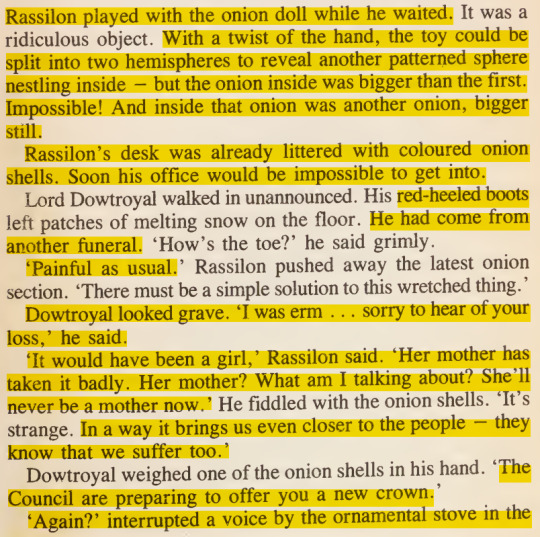

[...]
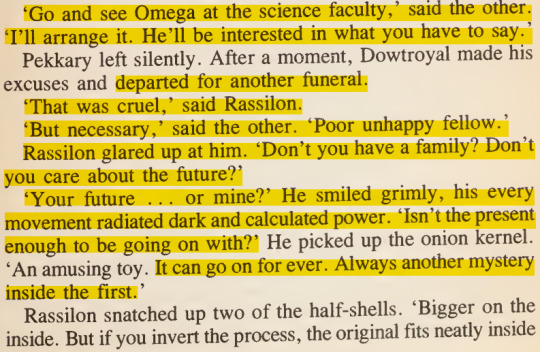

@firstofficerkittycat re: rassilon and onions.
#sorry for my insane highlighting btw lmao.#EVERYTHING IS IMPORTANT.#dw#(from 'cat's cradle: time's crucible')
34 notes
·
View notes
Text
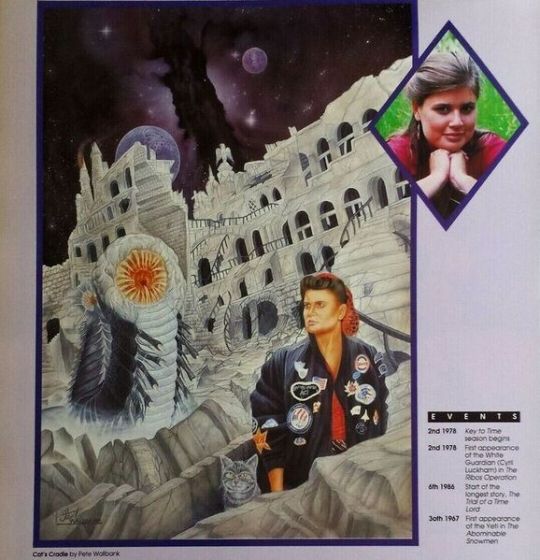
i love all the illustrations in here due to the way that i am but i think its important you know that: times crucible fanart in here. starts clapping

cheetah art ive never seen before what the FUCK !!!!! (from the 30th anniversary calendar, apparently)
50 notes
·
View notes
Text
here's how cat's cradle: time's crucible can still win

20 notes
·
View notes
Text
Now let's get to the gentle giant, Kirl! Third of the Crucible and doctor to the Faith. Naturally found in Anchordeep he was raised by a village of shrimp. Lambert broke their arm while saving him from sacrifice and laughed when he freaked out over it. Patched Lambert up best he could before being sent to Cat's Cradle. He is a bit shy outside of work, having a hard time talking to people. Sam started saying he was a gentle giant and Lily then called him GG for short. He never wants to do harm, and while he doesn't fear death he hates the idea of people being forced into their end.
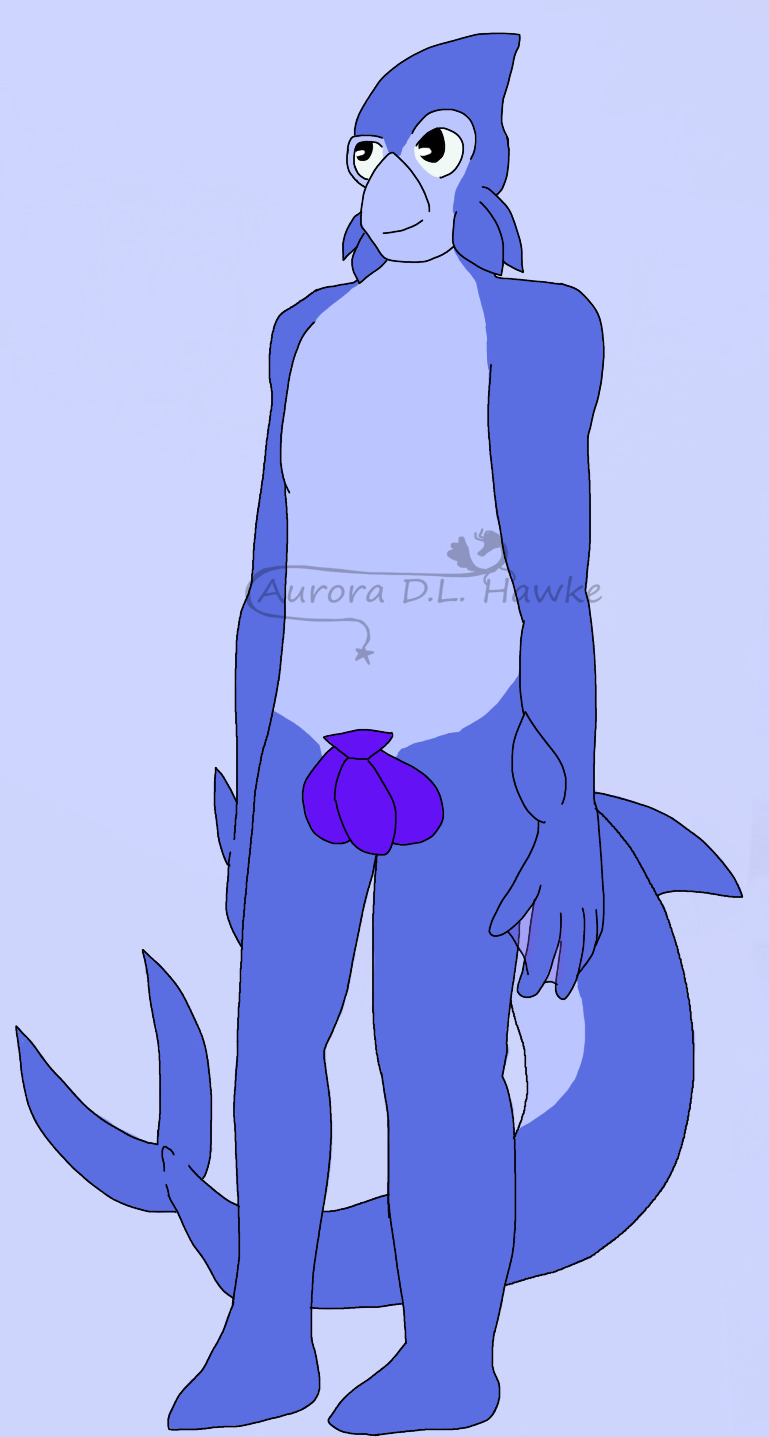
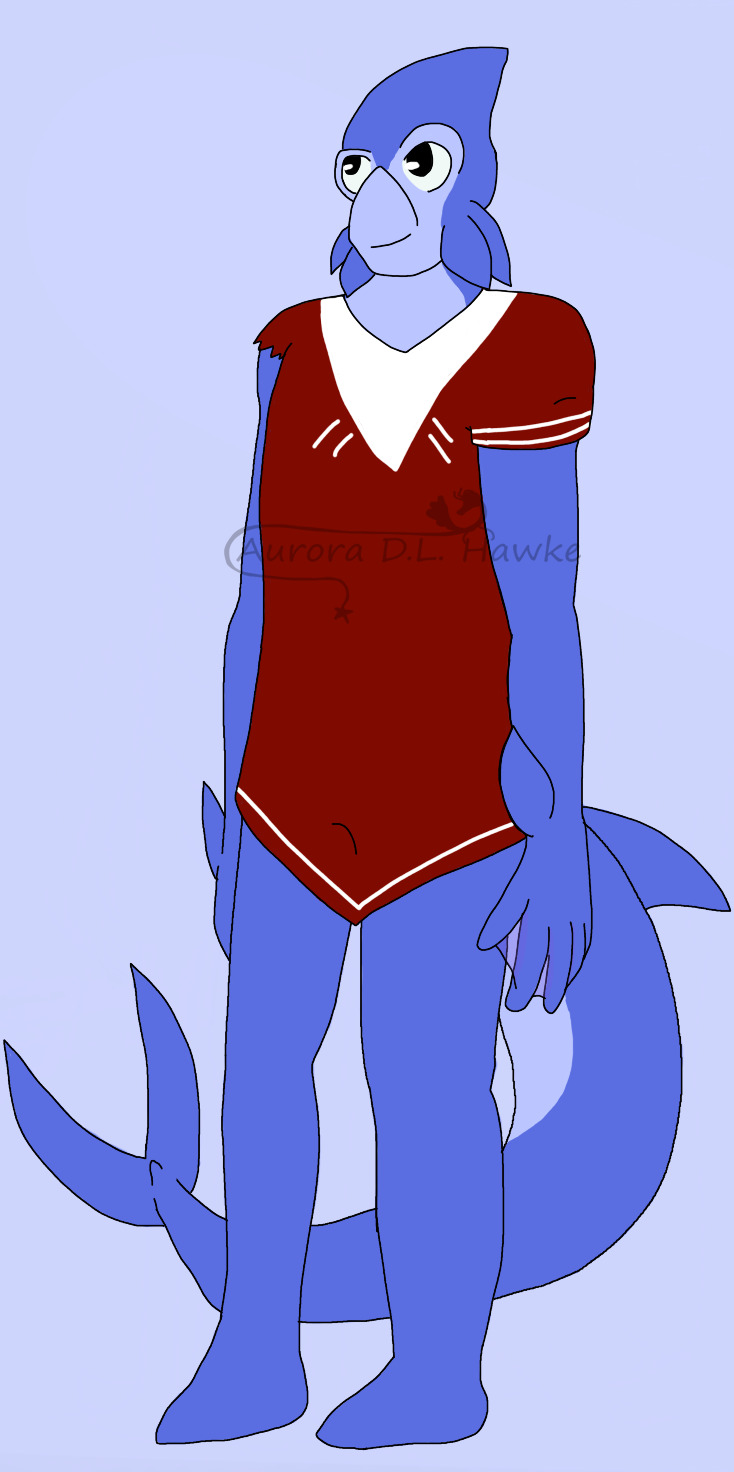
His main robes have a little more white to show the balance between life and death. He also often has a ripped sleeve given he is welling to ruin his clothes to patch someone up. Will take the clothes off his back to keep you warm type.
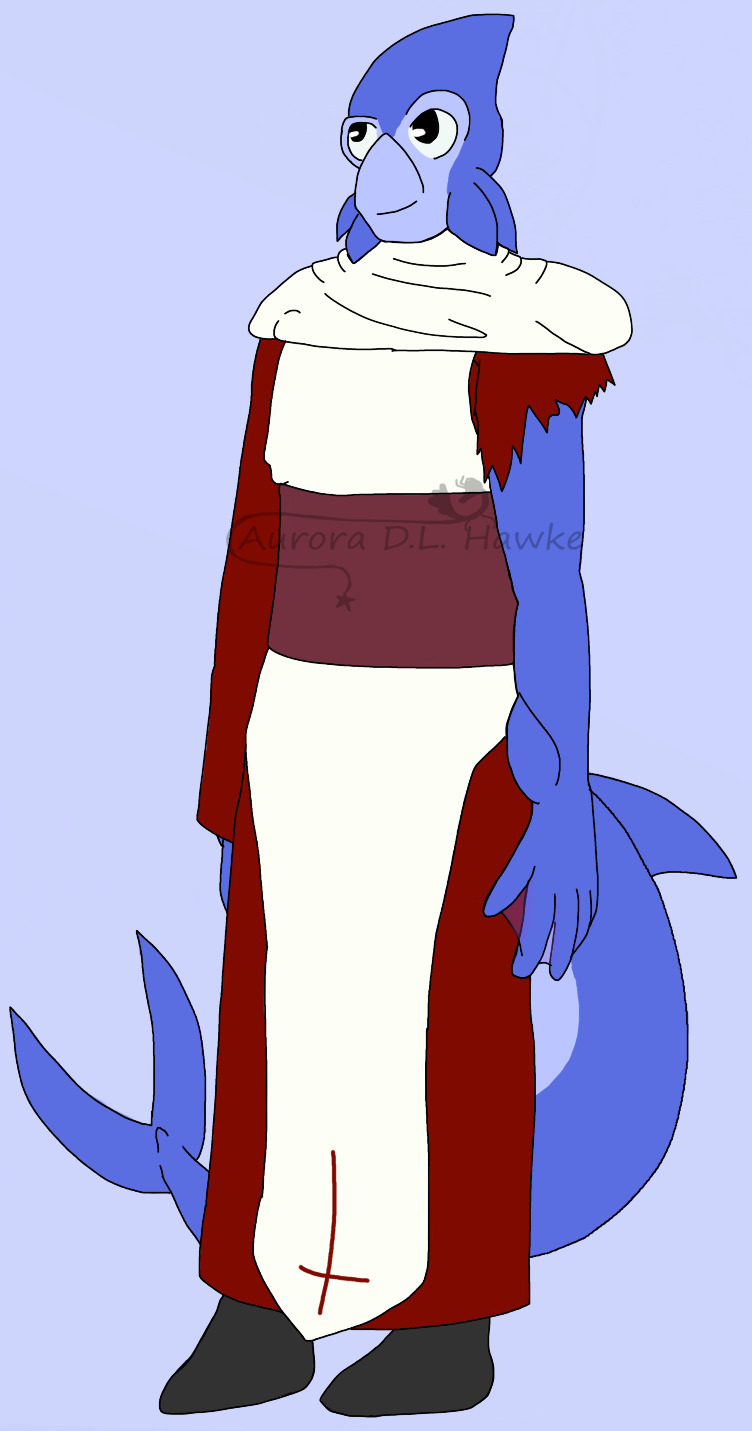
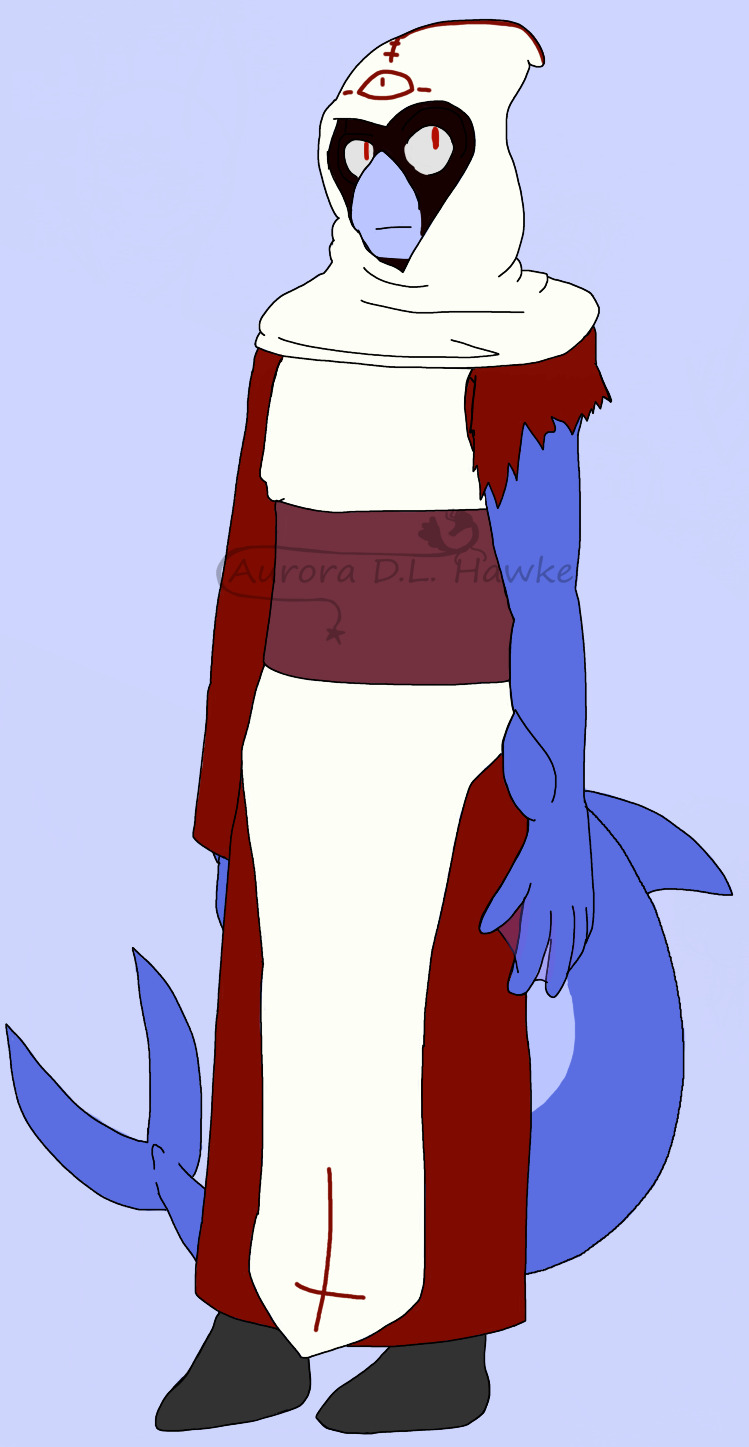
While he likely not going to go on a crusade I did design what he would look like out on the field. This shark is not a fighter though!
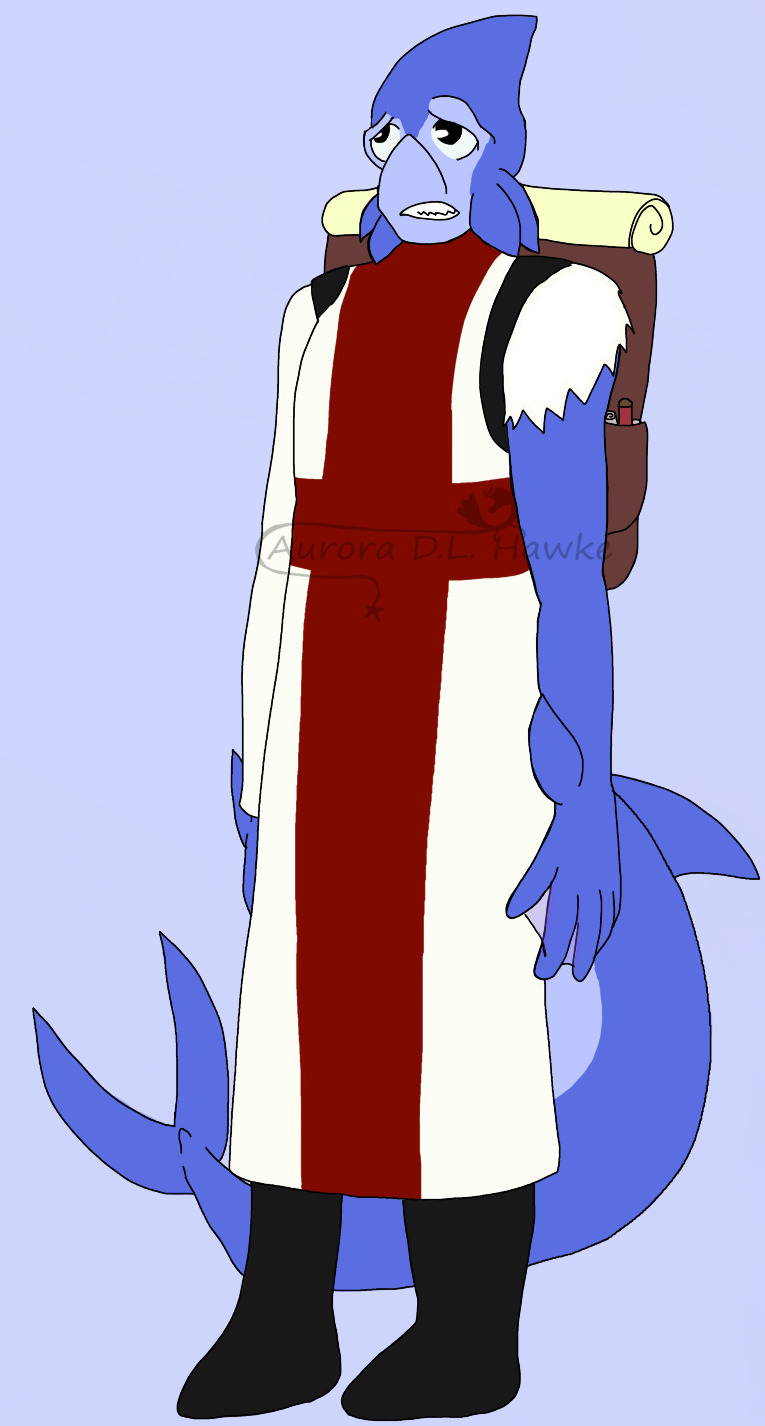
#cat's cradle au#cult of the lamb#cotl fanart#cotl#cotl follower oc#kirl the healer#kirl healer#doctor#shark#personal references
5 notes
·
View notes
Text
A Virgin New Adventures reading guide
I told @gotyouanyway that I'd give them my reading guide for the Virgin New adventures that I made for a friend a while back and posting it publicly was easy and also means other people can use this too. I wrote this back in 2021, but stand by it from what I remember. It has been like 5-6 years since I read some of these books, so if I rated your favorite too low lemme know and I'll give it a re-read.
This might not be that helpful if you want to pick just a few books - I designed it more to streamline VNA experiance
The key:
1 - I'd recommend skipping
2 - Eh. You can skip, but there is at least something to be gained by reading it
3 - I would recommend reading this. It's not plot-critical, but it is a good read or useful setup
4 - Read this for sure. It's either plot-relevant, or just that damn good (or both).
Timewyrm: Genesys - 4 (introduces the timewyrm and the series; unfortunately it's also not great.)
Timewyrm: Exodus - 3 (continues the timewyrm story, and is a fairly straightforward but interesting story)
Timewyrm: Apocalypse - 2 (eh. Not much for or against it either way)
Timewyrm: Revelation - 4 (concludes the timewyrm arc with style)
Cat's Cradle: Time's Crucible - 3 (Good if you can wrap you head around it)
Cat's Cradle: Warhead - 2 (depressing as all get out, but very well written)
Cat's Cradle: Witch Mark - 3 (just plain weird. Does finish the current arc and sets up Return of the Living Dad)
Nightshade - 2 (kinda weird. Notable as the first Mark Gatiss story)
Love and War - 4 (plot-relevant. Also awesome)
Transit -4 (Introduces important recurring character. Hard to follow but really good even if you can't follow it)
The Highest Science - 3 (good story, but ultimately not amazingly important)
The Pit - 1 (I did not enjoy)
Deceit - 4 (Not a great read, but important to the plot)
Lucifer Rising - 4 (Amazing, with important character development for our protagonists)
White Darkness - 2 (first David A. McIntee novel, but not especially gripping)
Shadowmind - 3 (good demonstration of where Ace and Benny are as characters, vaguely interesting plot)
Birthright - 3 (good character piece for Ace and Benny, shows a darker side to the Doctor without being dumb about it)
Iceberg - 2 (plot is messy and weird. Only read if you need the Doctor's half of the story from Birthright)
Blood Heat - 4 (starts alternate universe arc, important developments for the Tardis)
The Dimension Riders - 2 (gonna be honest here - I don't remember a thing about this one either way)
The Left-Handed Hummingbird - 3 (first Kate Orman novel. Pretty good, although a little weird and hard to follow)
Conundrum - 3 (Be prepared for weirdness. And superheroes. Helps setup for No Future and Head Games)
No Future - 4 (concludes the alternate universe arc with style, establishes Ace from here on out)
Tragedy Day - 3 (dark, but good. Worth a read)
Legacy - 3 (Kinda dark, but it works. Be prepared for over-continuity)
Theatre of War - 4 (Pulls off one of the best plot twists I've seen anywhere, and introduces Braxieatel to the Whoniverse)
All-Consuming Fire - 4 (Not plot-relevent at all, but is very good, especially if you are a Sherlock Holmes fan)
Blood Harvest - 4 (Major plot point in the Whoniverse)
Strange England - 2 (takes strangeness to an art form. Can be freely skipped)
First Frontier - 4 (plot relevant for spoiler-y reasons)
St Anthony's Fire - 2 (dark and weird, but well written)
Falls the Shadow - 1 (Just... no)
Parasite - 1 (Written by Jim Mortimore, therefore depressing as all get out)
Warlock - 2 (I did not read. Sequel to Warhead, so only read if you liked it)
Set Piece - 4 (major plot developments for multiple characters)
Infinite Requiem - 2 (like The Dimension Riders, I remember nothing)
Sanctuary - 3 (a pure historical. Not really great on its own, but helps set up Human Nature)
Human Nature - 4 (The story that was adapted to TV. One of the best New Adventures by itself, becomes even better by having fun comparing it to the TV version)
Original Sin - 4 (plot-relevant)
Sky Pirates! - 2 (Only if you like Douglas-Adams-esque dark humor)
Zamper - 3 (Somewhat interesting follow-up to The Highest Science)
Toy Soldiers - 2 (Adds pretty much nothing, but not painfully bad)
Head Games - 4 (a worthwhile look at where the Doctor has been going and who he is)
The Also People - 4 (probably my favorite New Adventure, although Theatre of War and Human Nature are also up there. Also resolves a recurring character's arc)
Shakedown - 3 (Fun, but ultimately fluff)
Just War - 2 (Weird and ultimately unimportant)
Warchild - 2 (Same situation as Warlock. Starts Psi arc, but can be skipped)
SLEEPY - 4 (Generally good story, sets up Psi arc if you skipped Warchild)
Death and Diplomacy - 3 (only worthwhile as setup for Happy Endings)
Happy Endings - 4 (Plot relevant. Ultimately fluff, but plot-relevant)
GodEngine - 4 (not plot-relevant, but an excellent story)
Christmas on a Rational Planet - 2 (part of Psi arc, and lays groundwork for Faction Paradox stuff, but I couldn't really follow it)
Return of the Living Dad - 4 (cleans up old plot threads, and is a great story in its own right)
Cold Fusion - 4 (Not plot relevant, but an excellent, gripping story)
The Death of Art - 2 (part of Psi arc, but not great)
Damaged Goods - 2 (Russel T. Davis's first Who work, but very dark and nasty)
So Vile a Sin - 4 (finishes Psi arc and has other plot relevance)
Bad Therapy - 2 (deals mostly with repercussions of previous story, but not great in and of itself)
Eternity Weeps - 1 (Jim Mortimore's writing is too depressing for me. Technically plot relevant in that Benny and Jason get divorced but not worth it)
The Room With No Doors - 4 (setup for Lungbarrow, good story in its own right)
Lungbarrow - 4 (concludes the new adventures of the seventh doctor in a surprisingly meaningful way)
The Dying Days - 4 (a nice little coda to the series that sets up Benny's adventures as well)
#doctor who#doctor who eu#doctor who expanded universe#dweu#virgin new adventures#doctor who vnas#doctor who virgin new adventures#dw vnas#dw vna#dw virgin new adventures#seventh doctor#ace mcshane#bernice summerfield#chris cwej#roz forrester
88 notes
·
View notes